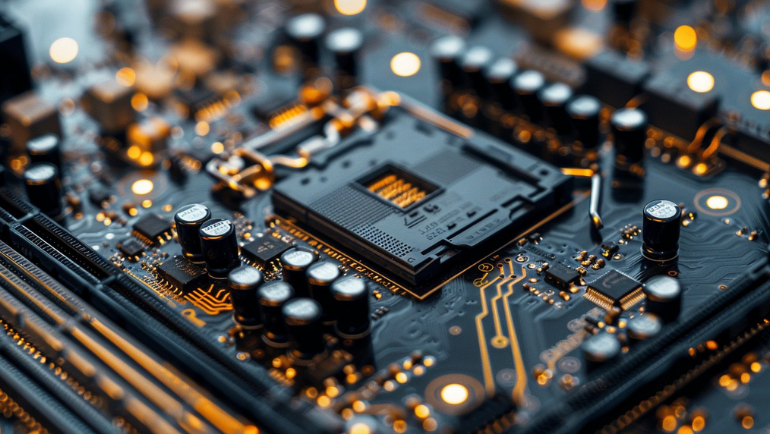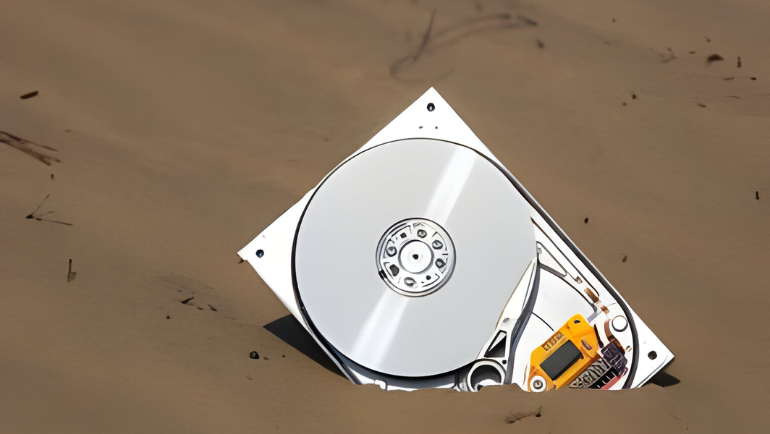
speed and small form factors. However, the problem arises when cells continuously shrink down to accommodate more capacity at less cost. This problem is commonly referred to as read disturbance which caters to the main reliability concern among businesses. The following section will explain read disturbance, why it happens, and what enterprises can do to prevent it.
What Is NAND Flash Read Disturb?

Error during read operation in NAND flash storage is known as Read disturbance. This happens in certain computer memory types, particularly in NAND flash memory storage devices such as Solid State Drives (SSDs), or flash memories. In a nutshell, extensive reading operations in a block cause unwanted changes in neighboring blocks. Read disturbance results in data corruption, loss, and other reliability issue in fault-tolerant workloads. However, many NAND flash manufacturers have found ways to help counter this problem. Therefore, understanding when and why it happens and how enterprises can take a proactive approach to prevent this problem.
How Does Read Disturbance Happen?

All types of NAND flash store charges in the floating gates which are identified using the cell’s voltage threshold. Since NAND flash cells connect as a single string, every reading operation turns on and off all the cells via the readout voltage (VRead). This can cause a small shift in threshold voltage over each read cycle steadily changing the cell state. When this small shift surpasses the limit, the enterprise receives a NAND flash read disturb error. Cross-coupling noise or crosstalk is the entanglement of different signal paths causing distortion. As NAND flash cells shrink, the signals travel close to each other, leading to greater coupling noise and a greater chance of triggering read disturbance. Environmental temperature also affects the increase the cross-talk. Side note: The change in cell state is irreversible, and will not change unless the entire block is erased.
The Solution to Read Disturbance
NAND and NOR are the two most important flash memories in IT and business. That said, NAND flash manufacturers have implemented new solutions to counter read disturbance, especially in M.2 NVMe and SATA SSDs due to small form factors. Let’s look into some solutions for preventing read disturbance to extend SSD lifespan.
Wear Leveling
Data in SSDs is divided into multiple blocks. Each block can take a finite number of read/erase cycles. However, due to reading disturbance in mix-use or write-intensive SSDs, the blocks are corrupted. To counter this problem wear leveling was introduced. It evenly distributes data among all the blocks, reducing the probability of read disturbance. Flash controllers use a wear leveling algorithm to select the block for reading or writing operations.
Early Move
It is an optimization technique where data is moved from NAND flash memory read disturb to DRAM for faster access. SSD controllers are used to determine which block needs to be accessed via predictive algorithms and move it to DRAM or NAND. Moreover, this feature detects and corrects data errors, but if the error persists in the block’s upper limit, then it needs to be erased. Side note: Only some NAND flash products have this feature
Read retry
Read Retry is the process of reading data again if the initial attempts fail due to reading disturbance. SSD controllers employ various techniques to improve data retrieval probability by adjusting voltage levels or using redundant data.
ECC
NAND flash memories accumulate more errors over time due to an unregulated voltage threshold. Error Correcting Code (ECC) code solves SSD read disturbance and other errors by adding extra bits to the data block. These bits detect and correct errors automatically during read and write operations. There are two basic methods of error correction in modern SSDs such as SAS or NVMe: hard and soft decision decoding. Both cater to specific problems in SSDs to prevent data corruption.
Best NAND Flash Products for Read-Only Operations

For read-intensive operations, low read disturb SLC NAND SSDs are the best choice over QLC or TLC due to the bigger NAND chip size, reducing read disturbance. Moreover, before buying flash memories like SD cards or CompactFlash always look for wear leveling or ECC features to increase device reliability. After following the necessary checks evaluate your needs and requirements to get the best deals. Computing Worlds offers you a wide range of new used and refurbished NAND flash storage devices for sale at competitive prices.
You can also request a bulk quote online for the required drives.
Frequently Ask Questions:
What Causes NAND Failure?
Electrons trapped in the NAND array sometimes escape or cause distortion, affecting the cell shape.
What are the Errors in NAND Flash?
The following are some common errors found in NAND flash technology.
Do Hard Disk Drives Have Read Disturbance?
No, the difference between HDDs and SSDs is that HDDs don’t experience read disturbance. However, HDDs do wear out faster than SSDs due to moving parts.






